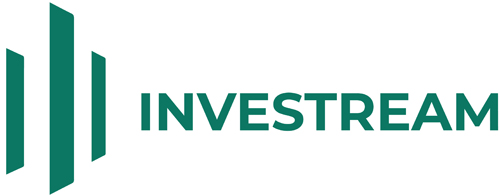What is NOI in Real Estate?
Understanding NOI’s Meaning in Real Estate and What You Should Consider When Investing
Have you ever entered into a business opportunity, only to later realize that the expenses you took on weren’t worth what you ultimately made?
It’s not enough to understand the gross income you’ll make from multifamily property investment – you need to know the net operating income as well to decide if the deal is profitable.
What is NOI in Real Estate?
Net operating income (NOI) can help you determine the profitability of a property that has the potential to generate income, like an apartment complex. To calculate net operating income, start by looking at the gross operating income (GOI). This includes all revenue generated by the property:
- Rental income
- Amenity Fees
- Parking Fees…etc.
Next, subtract the operating expenses to get the NOI. Operating expenses include maintenance, utilities, repairs, property tax, insurance and property management.
Here’s an example using the net operating income formula. Say the gross operating income is $200,000 and operating expenses are as follows:
- $5,000 for property management fees
- $10,000 for repairs
- $5,000 for maintenance
- $2,000 for utilities
- $10,000 for property taxes
- $5,000 for insurance
This would place the operating expenses at $37,000. Net operating income would be $200,000 – $37,000 = $163,000
Why is NOI important in real estate investing?
Understanding the NOI as a real estate investor is a key piece of a larger puzzle. The higher the NOI, the more revenue is being generated on the property compared to expenses. This can help you get a good idea of the cash flow potential of a certain property. It might also highlight areas for improvement – there are opportunities for cost savings in property management or maintenance expenses, for example.

The impact of NOI on property valuations
Property Value= NOI/CAP Rate
NOI is directly proportional to property value. A dollar increase in NOI is translated in a multiple increase in valuation. Multifamily properties that generate a lot of cash flow are more attractive, and therefore more valuable to investors.
How to use NOI to evaluate investment opportunities
For a particular market, interest rate, and property type, CAP rate is normally fixed and determined by investors demand of that type of asset in such market.
That lead us to NOI. It is important to study every line of the financial statements to understand the current levels, trend, and consistency of income and spot areas where overall income can increase. Similarly, it’s important to know the ratio of expenses to income and understand whether the ratio is sufficient for long-term sustainable growth.
When evaluating investment opportunities, properties should have the potential to:
- Increase NOI by finding ways to increase income and reduce or maintain expenses.
- Maintain NOI growth consistent with market in very desirable areas where CAP rates continue to shrink.
Investors can identify greater opportunities for cash flow by comparing the NOI of different properties. This metric, along with CAP rate, growth potential, and the overall risk profile of the prospective investment, can help tell a story of how profitable the deal has the potential to be.

How to improve NOI through asset management
Don’t forget: NOI is not a number written in stone. Net operating income can be improved through asset management with one of the following strategies:
- Rental rates: If rent is lower than market rates, there may be an opportunity to increase rates for tenants. This can also be boosted through capital improvements
- Capital improvements: Renovations to the property, expanding the rentable space, and adding amenities can all improve the rentability, and therefore NOI, of the property. Keep in mind that these also add expenses to the other side of the balance.
- Operating expenses: You may be able to negotiate better vendor rates, find areas of improvement to streamline operations, or make upfront investments in energy-efficient upgrades that will save more over time.
- Occupancy rates: If occupancy rates are lower, marketing the rental property to new tenants and offering attractive rental promotions can boost occupancy, and therefore NOI.
What is a good NOI?
There isn’t a specific number or percentage that is indicative of a good NOI. It’s more important to look at this number in conjunction with other figures, such as the CAP rate, to figure out whether an investment is worth pursuing.
If you’re looking for passive investment through multifamily real estate and have questions about Investream’s strategy when it comes to NOI and profitability, reach out. We’re happy to chat with you!
